#spry film review
Explore tagged Tumblr posts
Text
IT FOLLOWS (2014)
💁♀️Strong Female Lead

Different. The film takes a look at a horror deep into the making, not when it just starts, which creates a different drive for the characters. At the end, you get less information than you would have liked but that could be said about most horror films. Worth watching as a film and a good addition to the horror genre.
⭐⭐⭐.5

A girl had sex with a dude she’d been seeing and he gave her some sort of STD demon. She and her friends try to track down the douche who gave it to her and to stop the monster. There were some major plot holes and very little information by the end. She was the only one who could see the follower, who usually had sunken eyes (which was never explained). It wasn't supposed to touch you but it touched her and she lived (good for her though). Also, no one can see it unless they too are “infected” so, there is another level to it. They all fought it until they thought that it was dead but still passed on the Sexually Transmitted Demon anyway. It ended with the two mains walking down a street with a figure slowly approaching in the background.

#I#It Follows#it follows review#old review#movie review#supernatural review#3.5 stars#horror movie review#modern horror#mystery#modern horror review#OG review#older review#horror mystery#maika monroe#horror films#horror#horror review#david robert mitchell#daniel zovatto#jake weary#keir gilchrist#lili sepe#olivia luccardi#mike lanier#bailey spry
0 notes
Text
the acolyte 2-episode premiere thoughts:
ACCENTS ALIENS THE MUSIC THE OLD SCHOOL FILM DRAMA STYLE THE VIBES ARE IMMACULATE
ignoring that fire in space lmao
VERNESTRA VERNESTRA MY MOTHER THE RETURN OF MY ACEARO QUEEN
yord is hot. is there anything hotter than a man who wants to do a good job. what is the point of a man if not to SERVE and have goals beyond the self?
sol is a really good actor. u think he got that squid game emmy because gringos know korean? passion is a universal language u xenophobic fucks (one of the first reviewers were complaining about his accent because they suck)
oh fuuuuuuuck that’s a slutty voice from the evil mask guy
episode 2————
I LOVE ARM. is that a bts tattoo
the thing about child actors is that they are forever good at playing wise spry children. dafne and amandla have such small moments but they ooze charisma and intelligence. it ranges from corny (it’s sw so it’s okay) to incredibly expressive and emotional. i don’t even get acting but they’re so good
i am really loving osha.
i like that pip doesn’t speak basic so i don’t have to think about it having a human consciousness. but i still love him
MANNY JACINTOOO. not even that mustache can turn me off.
i literally love all these characters
rice paddy hat sighting
the hand armor i love star wars
small small insignificant complaint. i almost wish mae had a different accent or dialogue maybe? just because amandla-as-osha’s tenor / voice and devil-may-care mannerisms is very unique. i almost want mae to be more robotic or just something starkly different in her speech since you know they grew apart from each other. episode 2 also just a little bit undermined mae’s lethality which i was hoping more for. when she tries to break the forcefield i was hoping she would eat her pride more but then maybe it’s intentional since she is still young (and perhaps still impressionable?).
loooove looove the choreography forget whatever the fuck i just said. mae is so hot. that is the most insane fit
yord your defining trait will be your unbecoming yord no
oh? manny jacinto character and his dedication to mae oh? i am very intrigued. be it whatever, i am looking forward to more of them!
all in all, star wars is BACK BABEEYYYY
14 notes
·
View notes
Text
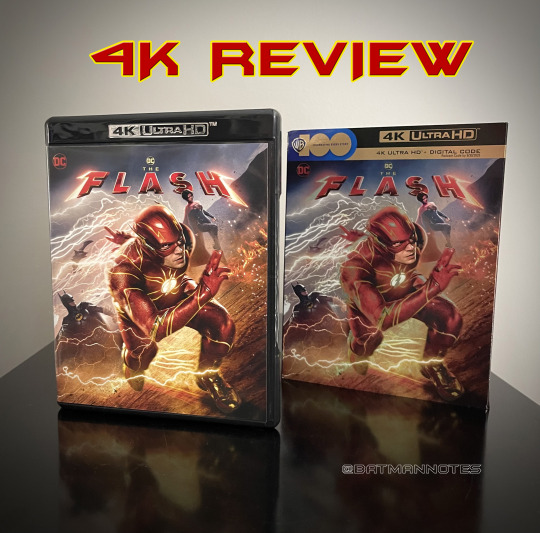
The Fastest Man Alive finally gets his own live-action solo flick with several other superheroes from the DC Universe lending a helping hand. Ezra Miller portrays The Scarlet Speedster who uses his superpowers to travel back in time to change the events of the past, however worlds collide when his attempt to save his family inadvertently alters the future.
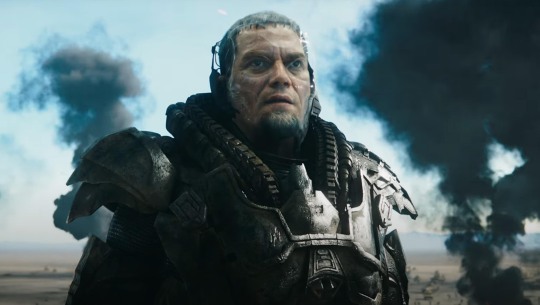
Oddly enough, with a number of superheroes making appearances, there is only one major super villain in this 2 hour and 24-minute affair, General Zod … a Superman villain. The Flash becomes trapped in a reality in which Zod has returned, threatening destruction, and there is no one to turn to. The Flash is left to coax a vastly different Batman (Michael Keaton) out of retirement to help rescue an imprisoned Kryptonian … albeit not the one he’s looking for, and to save the world that he is in and return to the future that he knows.
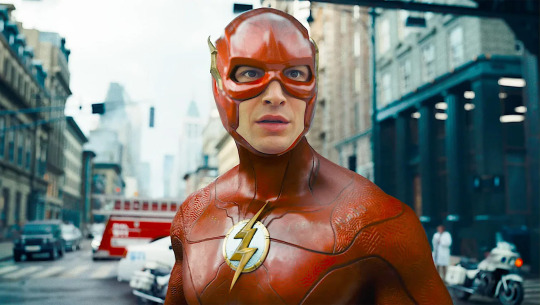
The film starts out with an amazing sequence where the Ben Affleck Batman is in hot pursuit of criminals on his new and improved Batcyle and The Flash is left to rescue babies at a hospital. Watching this sequence of Affleck makes me realize how cool a solo movie with him might have been. Besides a large dose of action, the movie also relies on humor to carry the viewer through a nearly 2 and ½ hour film. Some of the jokes land, but unfortunately most of them don’t. Auspiciously though, the action is enjoyable enough to carry the bulk of this outing.

After Barry changes the past and returns, he comes face to face with himself, or an 18-year-old version of himself. This eighteen-year-old version of Barry Allen is super too … super annoying. Present day Barry needs his other self to help him resolve the problems that he has created. Ahhh … time travel movies.
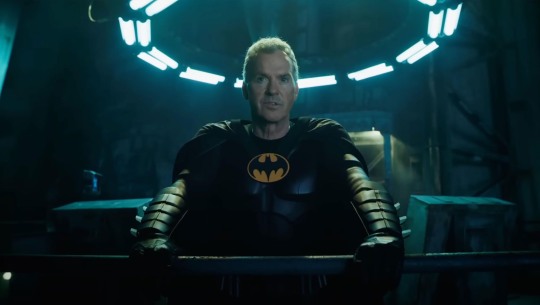
Keaton’s portrayal is both nostalgic and fun. He delivers a couple of legendary lines from his original 1989 Bat-flick while his classic musical motif by Danny Elfman plays in the background during the major events. For a lot of Bat-fans this was a dream come true, although I was left amazed at how spry Batman was at 70-year-old.
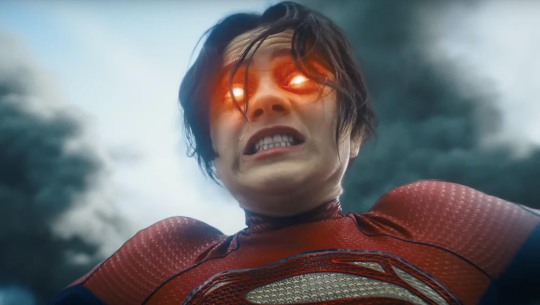
Sasha Calle’s Supergirl was lifeless and with no emotion, very reminiscent of Brie Larson’s unlikeable Captain Marvel. Another female character waisted was Kiersey Clemons’s Iris West; don’t expect any notable love story here. The main emotional draw of this film is the love between a boy and his mother. Barry goes to great lengths for the love of his mom, not realizing one minor adjustment to history has major ramifications throughout time.
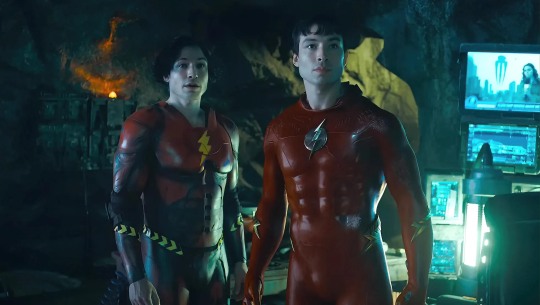
The Flash suffers from two major problems; horrendous special effects and the lack of any real villain. It’s hard to believe that with all the money spent on this flick, the computer animation is flat out cringeworthy in most places. The other thing that really bothers me is how DC has such awesome super villains that Warner Bros. has yet to tap into. The Flash is yet another example of that.
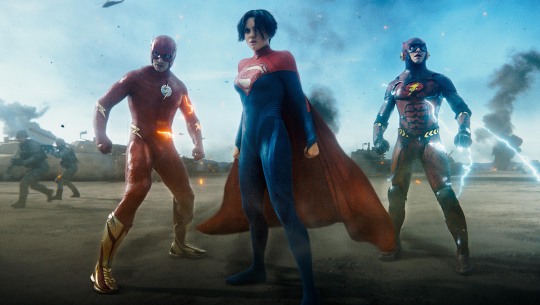
With all that said, overall, I thought The Flash was still fun and much better than the last couple of DC movie releases (Black Adam, Shazam! Fury of the Gods). Even with the bad special effects, the CGI cameos were nice to see and added to the film’s enjoyment, however, like Barry Allen, this film is its own worst enemy. Instead of squaring up against a legendary villain from Flash’s large gallery of amazing rogues, the Scarlet Speedster is left to battle a timeline that he put into place with another, much more annoying, version of himself by his side.
MOVIE GRADE: C-

4K Reviews:
VIDEO QUALITY 📽️ : A
In my opinion, you won't get a better picture quality than here. The Native 4K (2160p) transfer looks fantastic even with the horrible CGI in place. Colors burst on your screen at home that are equal to, if not better than, that on the silver screen.
AUDIO QUALITY 🔈 : A-
Although the dialogue is extremely low and hard to understand at times, the action sequences are bombastic and sound wonderful in this Dolby Atmos & True HD 7.1 sound conversion.
youtube
EXTRAS 📀 : A-
The extras (listed below) are great! Included with the digital copy of the film are a wealth of enjoyable featurettes. The only minor thing is Warner Bros. is no longer including a regular Blu-Ray copy of the film.
“The Flash: Escape the Midnight Circus” podcast – Six-part original scripted audio series
featuring Max Greenfield as The Flash
The Flash: Escape the Midnight Circus Behind the Scenes
Deleted Scenes
Saving Supergirl - featurette
The Bat Chase - featurette
Battling Zod - featurette
Fighting Dark Flash - featurette
The Flash: The Saga of the Scarlett Speedster - featurette
Making the Flash: Worlds Collide - featurette
Let’s Get Nuts: Batman Returns, Again - featurette
Supergirl: Last Daughter of Krypton - featurette
Flashpoint: Introducing the Multiverse - featurette
Available at Amazon.

9 notes
·
View notes
Text
TRAP HOUSE (2023) Reviews of Tubi Original horror thriller
Trap House is a 2023 American horror thriller film about an undercover police detective who infiltrates a madman’s bobby-trapped meth lab. Directed by Nicholas Humphries (Project Ithaca; Mermaid’s Song; ABCs of Death 2.5 “M is for Messiah”; Death Do Us Part) from a screenplay written by Jordan Robinson (Requiem for a Scream; Dangerous Snow Day). Produced by Graem Luis, Stan Spry and Eric Scott…
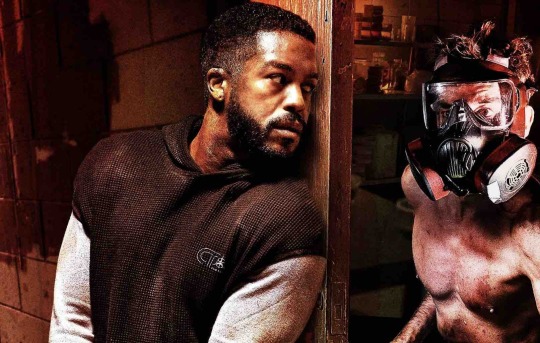
View On WordPress
#2023#Benjamin Wilkinson#Bruce Crawford#Gigi Saul Guerrero#horror thriller#Jaime M. Callica#Nicholas Humphries#Peter Bundic#review reviews#Trap House#Tubi Original
2 notes
·
View notes
Text
Four Flies on Gray Velvet & Till the Clouds Roll By
youtube
I wanted to show a friend Dario Argento’s FOUR FLIES ON GREY VELVET (1971, DVD) on a new DVD I had bought with a better print than the version I had watched (and reviewed) a few years back. To my shock, the better-quality reproduction made the film appear worse, except for some stylish murders and Jean-Pierre Marielle’s over-the-top performance as a gay private eye. With a clearer image, Mimsy Farmer’s inexpressiveness and Michael Brandon’s blankness when not playing comedy are hard to swallow.
So, to make up for it I showed him the musical numbers from the Jerome Kern biopic TILL THE CLOUDS ROLL BY (1946, TCM, YouTube) from Richard Whorf, Vincente Minnelli, George Sidney and lots of other directors. We skipped the boring book scenes, which involve Kern’s (Robert Walker) friendship with a fictional character (Van Heflin) whose cute daughter grows up to be a diva (Lucille Bremer) and Kern’s courtship of his wife (Dorothy Patrick), who in the film is so dull I’ve almost forgotten she existed. Not all the musical numbers are good, and Frank Sinatra’s rendition of “Ol’ Man River” ascends to the heights of camp as he sings black dialect about “sweat and strain” while dressed in an immaculate white tux. What’s to treasure are Lena Horne’s versions of “Can’t Help Lovin’ Dat Man of Mine” and “Why Was I Born,” Judy Garland’s “Look for the Silver Lining,” Virginia O’Brien’s “Life Upon the Wicked Stage” and a sadly truncated “A Fine Romance” and Dinah Shore’s impeccable phrasing on “They Didn’t Believe Me.” The biggest surprise is Van Johnson. MGM rarely gave him a chance to flex his musical muscles, but his delivery of “I Won’t Dance” is witty, and his dancing (with Bremer) spry and energetic, even if his double-breasted suit sometimes makes him look like a dancing coffin.
#musicals#giallo#dario argento#vincente minnelli#robert walker#van heflin#lucille bremer#frank sinatra#lena horne#judy garland#virginia o'brien#dinah shore#van johnson#jerome kern#michael brandon#mimsy farmer#jean-pierre marielle#Youtube
0 notes
Text
Apurva Review: Impressively Spry And Uncompromisingly Spare
Tara Sutaria in a still from the film. (Courtesy: YouTube) A girl – she just happens to be in the wrong place at the wrong time – is dragged out of an Agra-bound bus by a band of Chambal brigands and taken captive. She is in an unconscious state and at the mercy of the predators. Help is miles away. In the lawless ravines, the police are conspicuous by their absence. This, however, isn’t where…

View On WordPress
0 notes
Text
DVD review: “Caroline in the City” (1995-1999)
DVD review: “Caroline in the City” (1995-1999)
“Caroline in the City” (1995-1999) Television Ninety Seven Episodes Developed by: Fred Barron, Dottie Dartland and Marco Pennette Featuring: Lea Thompson, Eric Lutes, Malcolm Gets, Amy Pietz and Andy Lauer Richard: “So, Donna, do you miss Rome?” Donna: “Oh, no. All that traffic and noise and pollution, and rude people.” Richard: “Oh, I can see why you moved to New York.” Released…

View On WordPress
#Andy Lauer#Caroline in the city#Caroline in the city dvd#dvd#dvd new zealand#dvd review#DVD reviews#dvd television#DVDReviews#Eric Lutes#Lea Thompson#Malcolm Gets#spry film#spry film review#spry film television
2 notes
·
View notes
Text

It follows: A Mini Review
IMDB Summary:
“A young woman is followed by an unknown supernatural force after a sexual encounter.”
"one must feel a great longing to sit down, close one’s eyes and wait, come what may"
It Follows Playlist | It Follows Video
There is something so insidious about watching your trauma, your 'one bad night', follow you slowly and indiscriminately to try to murder you gruesomely.
I get chills just thinking about the soulless eyes of those spectors walking after Jay. It becomes apparent that even when she is not being chased, she is always being followed.
As someone originally from a city (shoutout Newark) that has gone through similar issues as Detroit. I thought that the scene where they drive past the suburbs into the city limits was handled beautifully and with love. I remember having friends who weren't even allowed to sleep over because of where my house was so it was an interesting dynamic to see/hear on screen even if for a second.
But the B.I.G reasons I love it follows, are not just because it is a clever way to show the ever-present dread of aging and how trauma "follows" forever. I think it is reductive to say this is just about sex or STDs. It has a hopeful note to those who suffer, it tells us that if you share your trauma with loved ones, if you work towards going forward you can deal with it together. You don't have to fight your battles alone. (Even if your battle looks stupid, unnecessary, and you put electric stuff by a pool). Because even if your loved ones can't see, feel, or know exactly what you are going through, they can be around for you, they can empathize.
Sorry gonna talk more nonsense about how much I love it follows, folks:
Let's go back to 2014, the trailer captures my eye.. i cannot get the person i was dating at the time to see it with me, as they hated horror ( red flag number one ha) . I went alone to a matinee at a fancy theater in Philly that I had never been to..
Saying I was in awe would be an understatement. I was obsessed. I was invested. I was captivated by Maika Monroe.. Gutted by the music. I left the theater paranoid about being followed on the way to the subway. Philosophizing about the "it" I saw it again. And again. And then I bought the soundtrack by Disasterpeace on vinyl and then the DVD.
Needless to say, this film means a lot to me.
The editing and the cinematography, reminded me why I love editing and help reinvigorate my passion.
It was also the first movie edit on my YouTube channel that got like any views, so it will always have a special place in my heart.
I literally forgot how much I loved this movie until I started typing?????
Anyway, I think we can all agree Greg had the most gruesome death scene. Because wtf, mom.
More Nonsense From Me:
More Reviews | My Youtube | My Letterboxd | My Twitter | My Kofi | My Spotify
#it follows#david robert mitchell#maika monroe#keir gilchrist#olivia luccardi#lili sepe#bailey spry#horror#review#film review#movie rec#movie review
2 notes
·
View notes
Photo
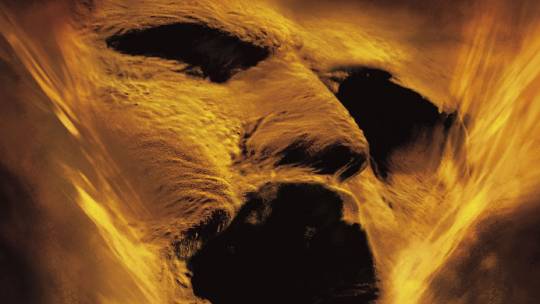
In Focus: The Mummy
Dominic Corry responds on behalf of Letterboxd to an impassioned plea to bump up the average rating of the 1999 version of The Mummy—and asks: where is the next great action adventure coming from?
We recently received the following email regarding the Stephen Sommers blockbuster The Mummy:
To whom it may concern,
I am writing to you on behalf of the nation, if not the entire globe, who frankly deserve better than this after months of suffering with the Covid pandemic.
I was recently made aware that the rating of The Mummy on your platform only stands at 3.3 stars out of five. … This, as I’m sure you’re aware, is simply unacceptable. The Mummy is, as a statement of fact, the greatest film ever made. It is simply fallacious that anyone should claim otherwise, or that the rating should fail to reflect this. This oversight cannot be allowed to stand.
I have my suspicions that this rating has been falsely allocated due to people with personal axes to grind against The Mummy, most likely other directors who are simply jealous that their own artistic oeuvres will never attain the zenith of perfection, nor indeed come close to approaching the quality or the cultural influence of The Mummy. There is, quite frankly, no other explanation. The Mummy is, objectively speaking, a five-star film (… I would argue that it in fact transcends the rating sytem used by us mere mortals). It would only be proper, as a matter of urgency, to remove all fake ratings (i.e. any ratings [below] five stars) and allow The Mummy’s rating to stand, as it should, at five stars, or perhaps to replace the rating altogether with a simple banner which reads “the greatest film of all time, objectively speaking”. I look forward to this grievous error being remedied.
Best, Anwen
Which of course: no, we would never do that. But the vigor Anwen expresses in her letter impressed us (we checked: she’s real, though is mostly a Letterboxd lurker due to a busy day-job in television production, “so finding time to watch anything that isn’t The Mummy is, frankly, impossible… not that there’s ever any need to watch anything else, of course.”).
So Letterboxd put me, Stephen Sommers fan, on the job of paying homage to the last great old-school action-adventure blockbuster, a film that straddles the end of one cinematic era and the beginning of the next one. And also to ask: where’s the next great action adventure coming from?
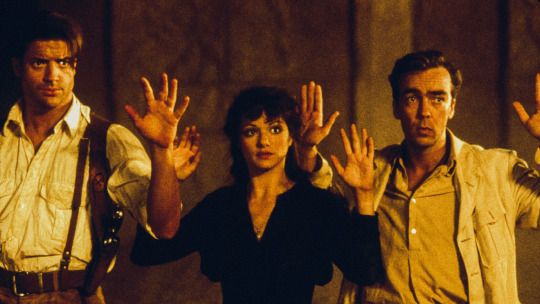
Brendan Fraser, Rachel Weisz and John Hannah in ‘The Mummy’ (1999).
When you delve into the Letterboxd reviews of The Mummy, it quickly becomes clear how widely beloved the film is, 3.3 average notwithstanding. Of more concern to the less youthful among us is how quaintly it is perceived, as if it harkens back to the dawn of cinema or something. “God, I miss good old-fashioned adventure movies,” bemoans Holly-Beth. “I have so many fond memories of watching this on TV with my family countless times growing up,” recalls Jess. “A childhood classic,” notes Simon.
As alarming as it is to see such wistful nostalgia for what was a cutting-edge, special-effects-laden contemporary popcorn hit, it has been twenty-one years since the film was released, so anyone currently in their early 30s would’ve encountered the film at just the right age for it to imprint deeply in their hearts. This has helped make it a Raiders of the Lost Ark for a specific Letterboxd demographic.
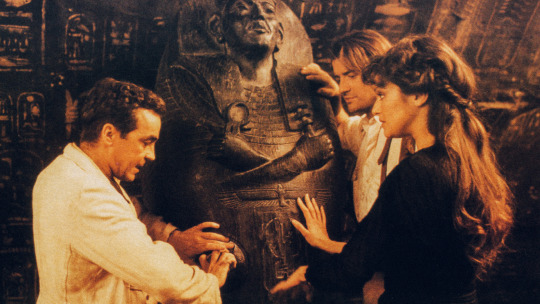
Sommers took plenty of inspiration from the Indiana Jones series for his take on The Mummy (the original 1932 film, also with a 3.3 average, is famously sedate), but for ten-year-olds in 1999, it may have been their only exposure to such pulpy derring-do. And when you consider that popcorn cinema would soon be taken over by interconnected on-screen universes populated by spandex-clad superheroes, the idea that The Mummy is an old-fashioned movie is easier to comprehend.
However, for all its throwbackiness, beholding The Mummy from the perspective of 2020 reveals it to have more to say about the future of cinema than the past. 1999 was a big year for movies, often considered one of the all-time best, but the legacy of The Mummy ties it most directly to two of that year’s other biggest hits: Star Wars: Episode One—The Phantom Menace and The Matrix. These three blockbusters represented a turning point for the biggest technological advancement to hit the cinematic art-form since the introduction of sound: computer-generated imagery, aka CGI. The technique had been widely used from 1989’s The Abyss onwards, and took significant leaps forward with movies such as Terminator 2: Judgment Day (1991), Jurassic Park (1993) and Starship Troopers (1997), but the three 1999 films mentioned above signified a move into the era when blockbusters began to be defined by their CGI.
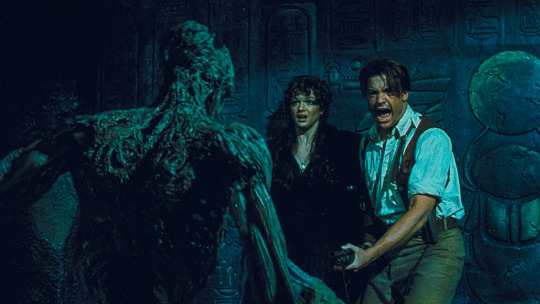
A year before The Mummy, Sommers had creatively utilised CGI in his criminally underrated sci-fi action thriller Deep Rising (another film that deserves a higher average Letterboxd rating, just sayin’), and he took this approach to the next level with The Mummy. While some of the CGI in The Mummy doesn’t hold up as well as the technopunk visuals presented in The Matrix, The Mummy showed how effective the technique could be in an historical setting—the expansiveness of ancient Egypt depicted in the movie is magnificent, and the iconic rendering of Imhotep’s face in the sand storm proved to be an enduringly creepy image. Not to mention those scuttling scarab beetles.
George Lucas wanted to test the boundaries of the technique with his insanely anticipated new Star Wars film after dipping his toe in the digital water with the special editions of the original trilogy. Beyond set expansions and environments, a bunch of big creatures and cool spaceships, his biggest gambit was Jar Jar Binks, a major character rendered entirely through CGI. And we all know how that turned out.
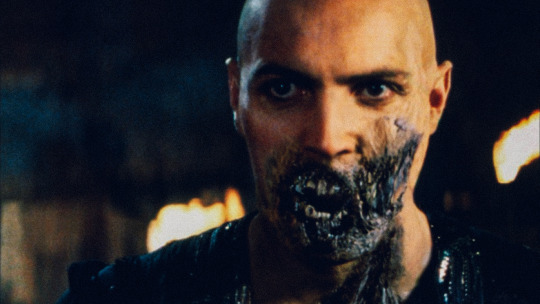
A CGI-enhanced Arnold Vosloo as Imhotep.
Sommers arguably presented a much more effective CGI character in the slowly regenerating resurrected Imhotep. Jar Jar’s design was “bigger” than the actor playing him on set, Ahmed Best. Which is to say, Jar Jar took up more space on screen than Best. But with the zombie-ish Imhotep, Sommers (ably assisted by Industrial Light & Magic, who also worked on the Star Wars films) used CGI to create negative space, an effect impossible to achieve with practical make-up—large parts of the character were missing. It was an indelible visual concept that has been recreated many times since, but Sommers pioneered its usage here, and it contributed greatly to the popcorn horror threat posed by the character.
Sommers, generally an unfairly overlooked master of fun popcorn spectacle (G.I. Joe: The Rise of Cobra is good, guys), deserves more credit for how he creatively utilized CGI to elevate the storytelling in The Mummy. But CGI isn’t the main reason the film works—it’s a spry, light-on-its-feet adventure that presents an iconic horror property in an entertaining and adventurous new light. And it happens to feature a ridiculously attractive cast all captured just as their pulchritudinous powers were peaking.
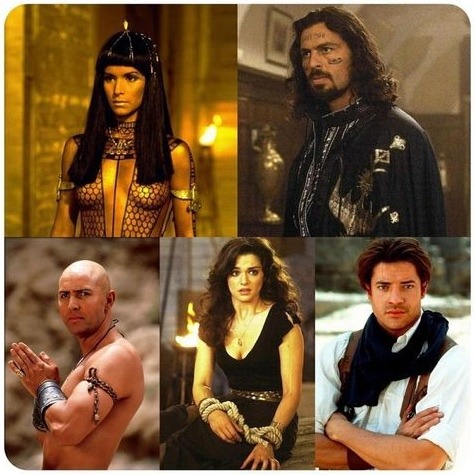
Meme-worthy: “My sexual orientation is the cast of ‘The Mummy’ (1999).”
A rising star at the time, Brendan Fraser was mostly known for comedic performances, and although he’d proven himself very capable with his shirt off in George of the Jungle (1997), he wasn’t necessarily at the top of anyone’s list for action-hero roles. But he is superlatively charming as dashing American adventurer Rick O’Connell. His fizzy chemistry with Weisz, playing the brilliant-but-clumsy Egyptologist Evie Carnahan, makes the film a legitimate romantic caper. The role proved to be a breakout for Weisz, then perhaps best known for playing opposite Keanu Reeves in the trouble-plagued action flop Chain Reaction, or for her supporting role in the Liv Tyler vehicle Stealing Beauty.
“90s Brendan Fraser is what Chris Pratt wishes he was,” argues Holly-Beth. “Please come back to us, Brendaddy. We need you.” begs Joshhh. “I’d like to thank Rachel Weisz for playing an integral role in my sexual awakening,” offers Sree.
Then there’s Oded Fehr as Ardeth Bey, a member of the Medjai, a sect dedicated to preventing Imhotep’s tomb from being discovered, and Patricia Velásquez as Anck-su-namun, Imhotep’s cursed lover. Both stupidly good-looking. Heck, Imhotep himself (South African Arnold Vosloo, coming across as Billy Zane’s more rugged brother), is one of the hottest horror villains in the history of cinema.
“Remember when studio movies were sexy?” laments Colin McLaughlin. We do Colin, we��do.
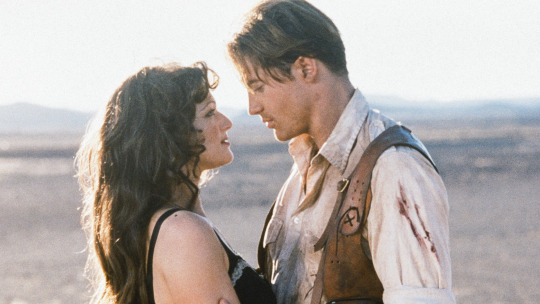
Sommers directed a somewhat bloated sequel, The Mummy Returns, in 2001, which featured the cinematic debut of one Dwayne Johnson. His character got a spin-off movie the following year (The Scorpion King), which generated a bunch of DTV sequels of its own, and is now the subject of a Johnson-produced reboot. Brendan Fraser came back for a third film in 2008, the Rob Cohen-directed The Mummy: Tomb of the Dragon Emperor. Weisz declined to participate, and was replaced by Maria Bello.
Despite all the follow-ups, and the enduring love for the first Sommers film, there has been a sadly significant dearth of movies along these lines in the two decades since it was released. The less said about 2017 reboot The Mummy (which was supposed to kick-off a new Universal Monster shared cinematic universe, and took a contemporary, action-heavy approach to the property), the better.
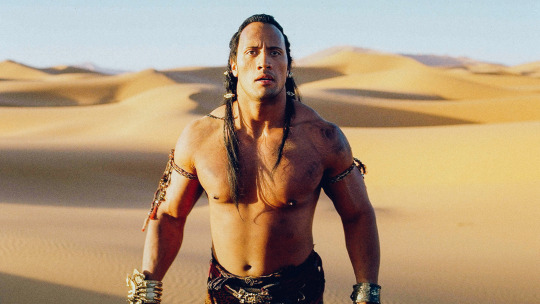
The Rock in ‘The Mummy Returns’ (2001).
For a long time, adventure films were Hollywood’s bread and butter, but they’re surprisingly thin on the ground these days. So it makes a certain amount of sense that nostalgia for the 1999 The Mummy continues to grow. You could argue that many of the superhero films that dominate multiplexes count as adventure movies, but nobody really sees them that way—they are their own genre.
There are, however, a couple of films on the horizon that could help bring back old-school cinematic adventure. One is the long-planned—and finally actually shot—adaptation of the Uncharted video-game franchise, starring Tom Holland. The games borrow a lot from the Indiana Jones films, and it’ll be interesting to see how much that manifests in the adaptation.
Then there’s Letterboxd favorite David Lowery’s forever-upcoming medieval adventure drama The Green Knight, starring Dev Patel and Alicia Vikander (who herself recently rebooted another video-game icon, Lara Croft). Plus they are still threatening to make another Indiana Jones movie, even if it no longer looks like Steven Spielberg will direct it.
While these are all exciting projects—and notwithstanding the current crisis in the multiplexes—it can’t help but feel like we may never again get a movie quite like The Mummy, with its unlikely combination of eye-popping CGI, old-fashioned adventure tropes and a once-in-a-lifetime ensemble of overflowing hotness. Long may love for it reign on Letterboxd—let’s see if we can’t get that average rating up, the old fashioned way. For Anwen.
Related content
How I Letterboxd with The Mummy fan Eve (“The first film I went out and bought memorabilia for… it was a Mummy action figure that included canopic jars”)
The Mummy (Universal) Collection
Every film featuring the Mummy (not mummies in general)
Follow Dom on Letterboxd
#the mummy#brendan fraser#stephen sommers#action adventure#fantasy adventure#action adventure film#the green knight#david lowery#dominic corry#letterboxd
529 notes
·
View notes
Text
Movie Review | Kinjite: Forbidden Subjects (Thompson, 1989)
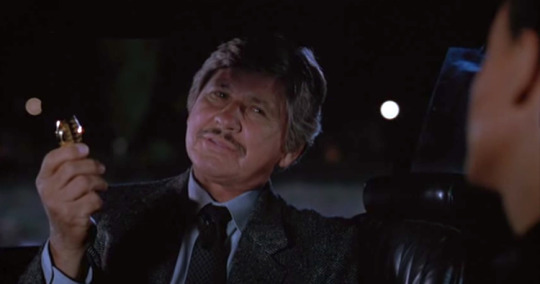
This review contains spoilers.
Maybe I was lulled by the relative humanism of The Evil That Men Do, but I watch my share of sleazy, morally bankrupt garbage, and it's been a while since I've watched something as upsetting as Kinjite: Forbidden Subjects. The plot here, about Charles Bronson trying to take down a pimp who peddles child prostitutes, might raise a lot of red flags, although one can concede that a Bronson vehicle can be extremely sleazy and still work on a lizard brain level (see: Death Wish II, which combines all the ugliest elements of the vigilante thriller into one neat little package). And the fact that the pimp and his sidekick are played by Juan Fernandez and Sy Richardson, the former who played a memorable character in Oliver Stone's sweaty, drug-fueled Salvador and the latter of which is a regular figure in Alex Cox's stock company, might offer some promise in terms of delicious bad guys deserving of whatever gruesome comeuppance Bronson will serve them.
But the movie doesn't settle for just that. There's also a hideously racist subplot about a Japanese businessman who sees a woman being groped on a train in Tokyo, and with his disturbing desires inflamed, decides to try that out after coming to American on Bronson's daughter, which are depicted in two agonizingly drawn out scenes. This businessman's daughter is kidnapped by the pimp, and while her arc ends one a thoroughly dispiriting note of suicide, the narrative thread around his attempted molestation of Bronson's daughter is inexplicably dropped. Why? The movie was content to get in its racist jabs and leave it at that? I've spent the last few weeks watching movies that offered not entirely positive portrayals of other cultures, but in those cases, the movies would offer certain nuances or grace notes to complicate or alleviate the portrayals. But this movie has no real interest in the Japanese, just fear and disgust, eager to depict them as evil perverts who are trying to take over. (There's a vicious racist rant by Bronson that the movie basically agrees with. Also, this might be the only American movie of this era to acknowledge what hentai is.) But then it shows that America has its share of evil perverts, which it demonstrates most forcefully in the scene where the Japanese businessman's daughter is raped in sequence by the pimp and her associates while Seinfeld-style bass blares on the soundtrack. The least racist read of this movie is that there are in fact evil perverts to go around. One imagines a sequel to this movie would have Bronson hopping from country to country killing evil perverts in airport bathrooms during each layover.
Of course, as this is a Bronson vehicle, he must go outside the law to get the bad guys off the streets, which we see him do first by jamming a dildo up a john's ass and later shoving an expensive watch down the pimp's throat. One wonders if Bronson might be better at sending bad guys to prison if he didn't force foreign objects into their orifices so readily, but these are the kind of sleazy thrills you go to see a Bronson vehicle for, especially in this era. And there are odd moments that are enjoyable on that level (I had a bit of fun with a scene where Bronson breaks up a porn shoot where the crew seems to be snorting up the budget), but this is also a movie where Bronson is replaced by an obvious body double anytime he needs to be spry and the movie mysteriously renders Richardson unable to kick down a door when it needs to tie up a plot thread. It is not a tightly directed thriller, is what I'm saying, which is disappointing as this was the final film directed by J. Lee Thompson and a very theatrical late role by Bronson. Thompson has directed some great movies like The Guns of Navarone and Cape Fear, as well as one pretty good Bronson vehicle in The Evil That Men Do. But the overwhelming feeling here is one of exhaustion, with Bronson complaining every other scene about how he doesn't want to do this anymore, and the presence of both men pared down to their most base, ugly instincts, their ids unleashed on screen.
So if you wanna wallow in the filth, this might be worth a look, but you'll need an hour-long shower after. If there's one thing it's good at, it's making your skin crawl.
2 notes
·
View notes
Text
George A. Romero’s “The Amusement Park”
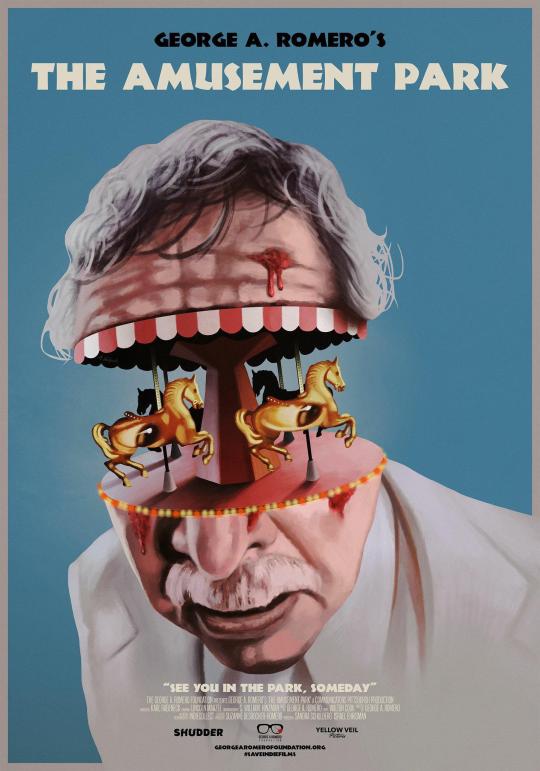
George A. Romero might be the man who most directly served as my gateway to critical movie watching. Unlike a lot of the filmmakers who helped me mature my understanding of film as a medium of art rather than a disposable experience, my love for his work has only deepened as opposed to having a twinge of cringe at the pretense with which I embraced some movies and directors that I’ve grown cold on or outright pivoted into disliking. Where, for the latter, they served a valuable purpose but were perhaps able to do so as a result of being digestible or, in retrospect, lamentably simple, Romero’s movies have not a single thread of posturing to something “important” woven in. Romero was always handy in using the backdoor of theme and metaphor to deliver ideas, as opposed to a direct scolding or information session.
At their very best, his movies achieve a balance that few films can when it comes to being experienced as being equally enjoyable and intellectual - while never sacrificing one for the other. There’s almost an elegance to the inelegance that comes from working so far outside of the studio system. The low budgets of his independent fare give a scrappy, tactile quality to locations and do little to glamorize and gussy up things like frequent collaborator Tom Savini’s chunky, visceral makeup effects. His run in the 70s is especially potent as a result of the low-budget aesthetic. The Crazies, Martin, and Knightriders would lose a certain verisimilitude to their outsider art mission statements if they had a glossy studio packaging.
I’ve been hesitant to write up my love for the late, great Romero since it feels like a daunting task to distill the endless rivers that flow from the massive glacial totem that is George A. Romero. The same thing can be said for a lot of people whose work I have deeply seeded respect and love for like Jonathan Demme or Robert Altman. I know that art and movies are reduced when treated like rites of passage or items on a checklist for credibility, but I have this overwhelming feeling that I want to come correct when it comes to folks like these. It feels like a responsibility to be comprehensive, eloquent, and effective in describing them, their work, or their massive impact on myself.
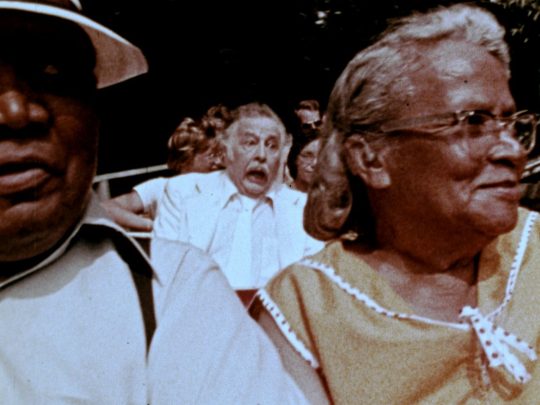
Well, I finally got enough reason to put down some words when I found out that a bizarre, long-thought-lost missing puzzle piece of this titanic personal hero was going to be released. Not only that, but I could see it in a relatively safe way in a theater. What I was lucky enough to see projected on a bright wall in a dark room was something that filled me with equal parts pleasure and stomach-churning uneasiness. One of the greatest compliments I can give to the film is that felt like it would make a terrific pairing with Carnival of Souls.
The Amusement Park is a film that Romero was commissioned to make by The Lutheran Society about senior citizens being disregarded by society. After having seen what Romero concocted up with screenwriter Wally Cook, it’s no surprise that the film was shelved, and thought destroyed. Like all of Romero’s great films, The Amusement Park operates with a keen but unpretentious metaphor and allegory at its heart. What makes this project immediately different is that it’s bookended with a direct address to the camera from its star, a charming and hammy Lincoln Maazel, breaking down the mission statement and intent of the symbolism within it. What follows is an experiential concept piece that disorients the viewer in an attempt to have them empathize with their elders’ terror and loneliness at the hands of ageism, elder abuse, and death. It’s an effective plea for human decency and a disquieting, haunted trip to hell outside of heaven’s waiting room.
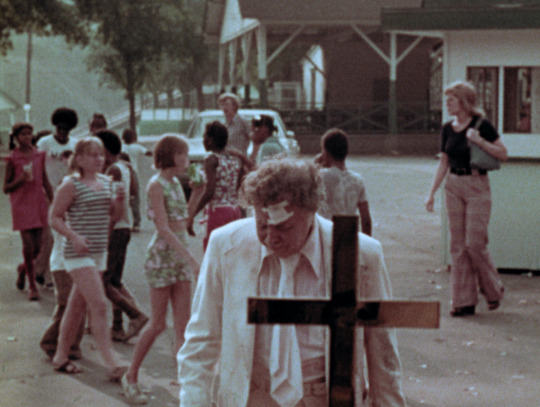
The runtime is under an hour and plot takes a back seat to sensation, so I won’t go into too much detail for the sake of preserving the set pieces’ potency. What I will do is highlight a few moments and stylistic choices.
The Amusement Park is very angry and very sad. The camera is mostly handheld and takes on a documentary texture when it focuses on the faces of other elderly park goers. There’s a lament for the life that these poor folks are trapped within cut between a venomous glare at the ancillary characters who disregard or assault the senior park guests. Romero’s usual distaste for the wealthy resurfaces most notably in a scene where Maazel’s man sees a rich and “proper” man dine on lobster and smoke a comically large cigar before looking back at the old man in absolute disgust. He’s served a slop of beans and bread on a paper plate. Like a lot of the film’s ideas, the dichotomy of circumstances trades subtlety for effectiveness. What makes this scene unique is that when the old man offers to share his meager rations with the other hungry guests, they show no restraint – it’s a nasty collage of shots with bread being torn and people shoved.
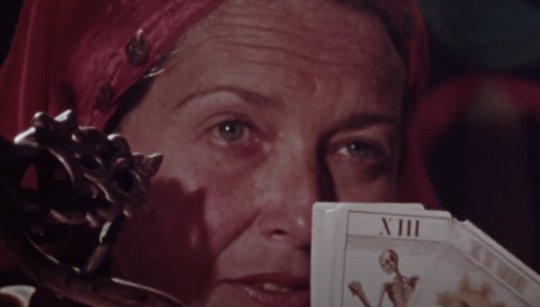
The real standout sequence comes as our unnamed protagonist follows a young couple into a fortune teller’s tent while they ask to see their future. The spritely lovebirds want to know if they’ll be still be together in their old age, but the fortune teller offers warning that in order to see their future, they’ll need to see it in its entirety. The couple’s youthful ignorance shows a general feeling of invincibility that many of the young characters have throughout the film, but once they see what the soothsayer has to offer, they are forced to reckon with the ominous vicissitudes that appear before them.
The editing of the sequence is jarring, cutting between the disparate time periods – flash cuts between the crystal ball and the eyes of the woman behind it are slammed into what looks like a documentary or news interview with a building manager who laments the raise in taxes and how it keeps him from fixing the dangerous, dilapidated, low-rent housing behind him. This is an institutional crisis. The film cuts to narrative footage of that same young couple, now old and desperate for emergency medical attention. Outside, a high school marching band blares and trots forward with a brash, spry pace. It’s as if the band is flippantly taunting the old women, life trampling on without her and her bedridden husband. The wife’s attempts to reach their doctor are moot. Chaos overwhelms a quiet passing. Upon seeing his own mortality, the young man targets the protagonist and attacks him in a flurry of confused anger.
The movie has an episodic structure, and some of these interludes work better than others. While I do think that the movie is quite good and a must-see for any curious fans of the director’s career (he even has a great cameo), I certainly wouldn’t hail it as a masterpiece. Working for hire within the specific constraints of an educational film and off of a script that he didn’t write (a rarity within his career), there’s some serious clumsiness to the some of the story beats and how underlined the symbolism is. I also greatly missed the seamless integration gallows humor that spices up even the bleakest of Romero’s other projects. What’s here in terms of levity occasionally undercuts the horror. That being said, its mission to imbue experiential empathy for old folks was undeniably successful in this viewer - the packaging may be a bit busted, but the product is fresh and satisfying. Like The Crazies or his Dead films, the ever-approaching specter of death is the driving force behind the melancholic terrors of the piece. Romero’s knack for satisfying but somber endings is present here as well. Images from this - like the holy men closing up shop - stack up alongside some of the other hauntingly effective moments from Romero’s movies that are emblazoned in my brain like the closing montage of Night of the Living Dead, the opening sequence of Martin, the roaches in Creepshow, and the wall of hands from Day of the Dead.
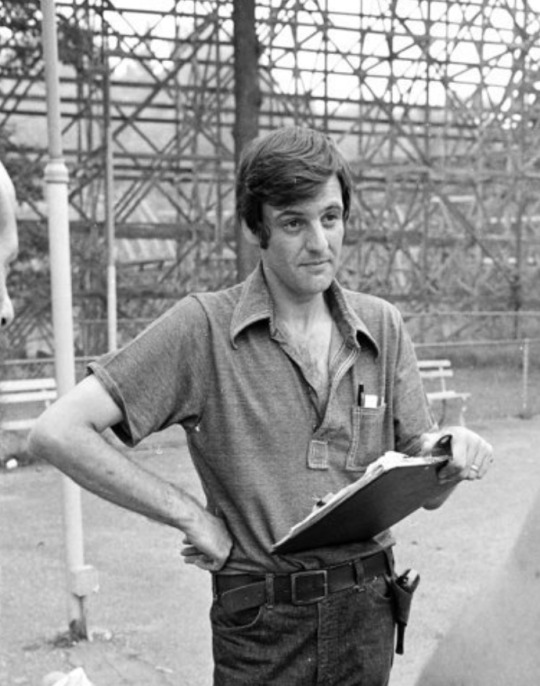
While it feels weird to offer praise to a man alongside a short review for a movie he was, by all accounts, not terribly impressed with, this is what I’ve chosen to do. *shrugs* I’ll never write the perfect tribute or quite distill the gratitude I have for certain people and the gifts they gave me (along with countless others). I can selfishly make that a burden and never actually put it out there for fear of imperfection, or I can be grateful and embrace the luck that I’ve been able to see another work from one of those people. Especially after watching this, I’ll choose the latter.
The Amusement Park is now available to stream on Shudder.
3 notes
·
View notes
Text
Smokey brand Movie Reviews: Under Pressure
I’m a huge fan of Samara Weaving. Chick has the range on her. She is, apparently, pretty accomplished in the film game, getting her first run in the states as Heather in Ash vs. The Evil Dead. While i did check out Ash, it was long after the show was canceled so my very first introduction to Samara was with Netflix’s The Babysitter. I loved this movie and she was excellent in it. It wasn’t the best but it was fun enough for me to recommend it to anyone listening. Towards the end of last year, i heard rumors of a sequel and then nothing for a long ass time. Today, however, that f*cker dropped and i just HAD to check it out. Will The Babysitter: Killer Queen hold up against it’s surprisingly entertaining predecessor? We ask the big questions here, on this blog.
The Good
It’s super dope seeing where these kids ended up after the first flick. I really enjoyed the characters the first time around so double-dipping into to this world was a real pleasure.
I’m not a huge fan of McG’s directing style but dude has his own flavor. You definitely know this is a McG flick, for sure. Sh*t is like watching a comic book in real life. It’s kind of chaotic and a little ADD, but for this story? It works perfectly.
I really like the dialogue in this flick. It feels Diablo Cody-esque but not all pretentious. I wouldn’t go so far as to say it’s organic but it’s palatable. McG has a knack for infusing his films with a decent amount of humor and it really shows in this script.
The kills in this thing were exquisite, much better than the first. The CG blood was a little much but i absolutely enjoyed the gore. I’m not usually a fan of the sloppy but, in a film like this, that’s the biggest draw.
My mans still has no shirt. Continuity!
The cast is still amazing. Bella Thorne, King Bach, Hana Mae Lee, Samara Weaving, and Robbie Amell are still as hilarious as ever but i really like the new additions. I was a little surprised where characters ended up and the inexplicable resurrection of others was a little much, but it’s all in service to a rather forced narrative so it’s cool.
Judah Lewis as Cole Johnson is as spry and hilarious as ever. Dude was the best thing about the first flick, he and Samara, but i adored this kid, specifically. He had some... Interesting character development but his bad-assery is still intact when the pressure is on. Always a pleasure seeing my guys get their shine.
Emily Alyn Lind as Melanie was also as awesome as ever. She made a pretty aggressive heel turn for this entry but chick pulled it off. She’s not as playful or adorably wicked as Bee, like, not even close. Melanie is a straight up psychopath in this and i was real surprised. It’s like she’s channeling Snakebite Andi and it totally works.
Jenna Ortega as Phoebe is an absolutely welcome edition to this cast. She’s amazing and cute and absolutely brutal. This chick is as capable as Cole and it really shows. If they make this a trifecta, i hope she comes back. Ma was the best thing about this movie, just like Cole was in the first.
The pacing of this movie is on straight up meth, man. It definitely has someplace it wants you to be and it’s running full steam ahead, not stops. This is also a thing in McG movies; Dude has next to no subtlety or nuance but, sometimes, that’s fine. For this movie? It’s perfect.
But that Apache dance break, tho!
The Bad
All of the heartfelt, emotional, scenes in this thing feel out of place. It’s crazy tonal whiplash when placed next to the over-the-top violence, spastic editing, and weird ass interludes that have nothing o do with anything.
I had to adjust the settings on my TV because McG’s penchant for over-saturated color grading is on full display. I don’t know if it was just me or whatever, but these daytime shots feel bleached the f*ck out.
This thing feels like one big ass music video. Like, I'm not mad, but it’s very obvious the soundtrack to this flick has been weaponized to distract. You barely get more than a few seconds of any one song and it kind of gives you lyrical whiplash.
I don’t really like where Cole ended up, especially after his actualization after the first. It feels... forced? Yeah, forced is good. I think Cole needed to be nerfed in order for this entire narrative to be a thing. I don’t agree with it, but i understand it.
There are several plot holes that just go unaddressed. It’s kind of a problem, especially at the end where certain events occur that directly contradict things that were
The Verdict
I loved this movie, man. I was already a massive fan of the first but this one is pretty fun, too. I said fun, not good. As a film, objectively, it’s all over the place. There are several choices made that just boggles the mind. McG feels like the store brand version of Edgar Wright and that is no more apparent than how he decided to present this narrative. I’m not mad at it, i rather enjoyed my time with it, but, i mean, Scott Pilgrim is a thing and it does what this movie tries to do, infinitely better. Still, for what it is, this film is fun watch. Great performances, incredible energy, dope music, hilarious dialogue, legit gore; It’s just a bloody grand old time!
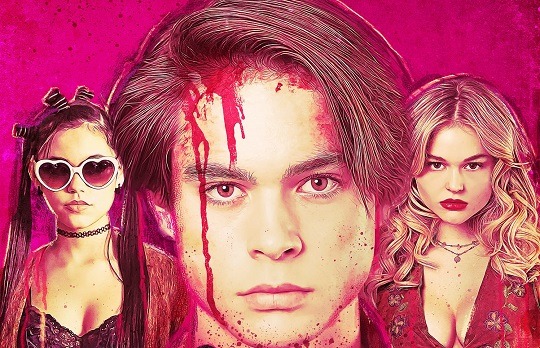
29 notes
·
View notes
Text
THE FINAL ROSE (2022) Reviews of Tubi mystery movie
THE FINAL ROSE (2022) Reviews of Tubi mystery movie
The Final Rose is a 2022 American murder mystery film about a killer who is targeting contestants on a reality TV show. Directed by Tim Cruz from a screenplay co-written with Blake Rutledge. Produced by Stan Spry and Eric Scott Woods. The Cartel Pictures production stars Christina Masterson, Brytni Sarpy, Robert Palmer Watkins, Roger Howarth, Brittany Underwood, Robert Adamson, Brian McGovern,…
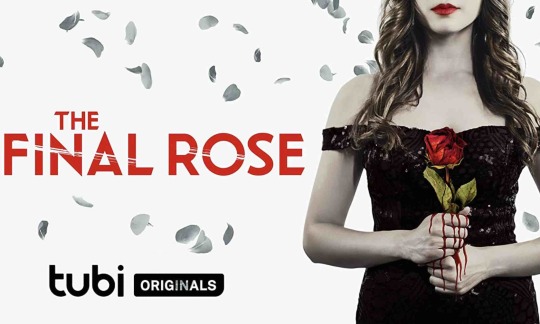
View On WordPress
#Brytni Sarpy#Christina Masterson#murder mystery#review reviews#Robert Palmer Watkins#Roger Howarth#The Final Rose#Tim Cruz#trailer#Tubi Original
3 notes
·
View notes
Note
Hi, I know you've put out opinions on the new Emma movie through various posts, but I'd love to hear an overall review. I know you liked it but uhhh I always like to hear your thoughts. Especially on all the horniness/sexy stuff I've been hearing about (I have good priorities)
No problem. I’ll try to keep this shorter than my costume answer from yesterday!
I really liked Emma 2020 and it has fast become one of my favorite Austen adaptations, and my favorite adaptation of the novel. Emma was the first Austen I read and it has long held a place in my heart because of it. I remember sitting down to read the book and by page 10 I was saying aloud “where has Jane Austen been my whole life?” and by page 50 I knew I would end up reading everything she ever wrote.
So with that huge pile of emotional baggage, I set the bar as low as I possibly could going into the film. I had a number of concerns: 1) The casting of Bill Nighy as Mr. Woodhouse (and certain clips from the trailer that made it look like he was going to be too spry and quirky to really play the character from the novel.) 2) The ability of the lead actors (unknown to me and very young) to actually handle the difficult dialog. The overlapping/shouting clip in the trailer was really worrying. 3) The difficulty of squeezing the entire novel into a two hour film.
But going into every adaptation of a Jane Austen novel, I always hope for one thing: the right tone. I think one of the failings of almost all of the adaptations, to a certain degree is to balance the satire and the romance. Certain adaptations favor the romance over the satire, but I confess I always prefer it when the satire is the main object of the film. I feel very strongly that social satire was the entire point of Austen’s writings. She wrote in this genre because she could. It was almost the only arena available to her as an artist, but going back to her juvenilia where she skewered the conventions of gothic romance novels, it’s clear that she understood the genre better than most from a young age.
And I have to say, that I was pleasantly surprised and thrilled actually that this adaptation managed to get this tone correct. The balance is perfect. The characters have their moments of being grotesques, exaggerations for comic purposes, but they also have moments of being human and real that I really enjoyed. I actually burst into tears when Mr. Knightley came to Harriet’s rescue at the ball. That is always my favorite moment, and an emotional high point, but Mia Goth just had my heart through the whole movie and her reaction in that scene was so perfect.
As for the sexiness, I think the thing to remember is that with a female director and writer, this is the first Austen adaptation filmed entirely through the female gaze. And they are not shy about it. Johnny Flynn is naked (tastefully so I think) in the first two minutes of the film and there is a parallel scene where Emma is warming her backside by the fire that has a similar earthy feel to it. The lighting and camera angles with Flynn remind one of classical painting, while the lighting and camera angle on Anya Taylor Joy are much more forgiving. It’s like a relatable moment of humanizing her. I think seeing Flynn naked and dressed by his servant humanizes him, but it also objectifies him. And honestly that’s what’s going to happen in an Austen adaptation anyway, and I like that the director got it out of the way, straight off the bat.
The way Knightley and Emma’s dance is filmed at the ball is very different than I’ve ever seen done in an adaptation. There are a lot of closeups of their hands touching, his hand touching her body, the sound is pinpointed as well so that you hear their breath over the music. It’s very erotic.
After the ball, the filmmakers chose to change the story a bit, by revealing Mr Knightley’s feelings for Emma. The book keeps his feelings a secret much longer, but you have to remember it was written 200 years ago. People have seen this trope many, many times and they are going to guess, I think. So you sacrifice that surprise in order to have Mr. Knightley’s POV and I think it’s worth it. His pining is both funny and pretty hot. I think it’s kind of silly that he’s running all over Highbury on foot, but I’m willing to live with it.
OK this is already as long as the other post, so I’m going to leave off. I hope this helped answer your question. :D
23 notes
·
View notes
Text
Blu-ray Review: Anaconda

The horror output of the 1990s was dominated by Scream imitators, but the slasher film wasn't the only subgenre to receive a spirited revival. Creature features briefly took hold in the latter half of the decade, treating filmgoers to a number of threatening animals turned into man-eating monsters; including snakes (Anaconda), sharks (Deep Blue Sea), crocodiles (Lake Placid), octopi (Deep Rising), insects (Mimic), gorillas (Congo), and mythological creatures (The Relic). These films took the Jaws archetype and updated it with the slick production values and state-of-the-art special effects heralded by Jurassic Park.
Anaconda, which slithered into theaters in 1997, was one of the more financially successful entries in the creature feature revival. It had to be; the film cost a bloated $45 million due to the cutting-edge technology used to animated the titular monster, which reportedly cost $100,000 per second of footage. Director Luis Llosa (The Specialist) approaches the material - which is little more than a B-movie with an A-budget - a bit too seriously, but the inherent cheese ultimately pervades.

Written by Top Gun and Dick Tracey duo Jim Cash and Jack Epps, Jr. along with Hans Bauer (Titan A.E.), Anaconda’s plot is straightforward. A documentary crew travels through the Amazon rain forest by river barge in hopes of capturing the elusive natives known as the People of the Mist on film for the first time. While in search of one great mystery of the expansive Amazon, the hapless group discovers another: a 40-foot, man-eating anaconda. Tensions (and stakes) rise even higher when it’s revealed that one crew member is there for the snake and considers the others expendable.
The film is driven by an ensemble cast. Jennifer Lopez - whose breakout performance in Selena hit theaters mere weeks earlier - takes top billing as documentary director Terri Flores. Ice Cube (Friday), who plays cameraman Danny Rich, was still in the process of transitioning from hardcore rapper to family-friendly entertainer. Jon Voight (Deliverance) chews the scenery with a questionable Paraguayan accent and a ponytail as snake poacher Paul Serone. Eric Stoltz (Mask) portrays Dr. Steven Cale, an anthropologist who is an expert on the indigenous tribes.

Rounding out the cast are Owen Wilson (Wedding Crashers) as the sound guy, Vincent Castellanos (The Crow: City of Angels) as the barge’s captain, Kari Wuhrer (Eight Legged Freaks) as the production manager, and Jonathan Hyde (The Mummy) as the documentary’s snooty narrator. Danny Trejo (Machete) has a small role as an ill-fated poacher in the opening scene. While none of the film’s performances are particularly memorable, the eclectic collective is perhaps even more entertaining to watch now, given the cast members’ wildly different career trajectories in the two decades since.
Llosa makes the grievous mistake of breaking Jaws' golden rule by showing too much of the creature. The anaconda is revealed to viewers – in its unconvincing animatronic puppet form, no less – attacking an animal prey before the film’s characters are even aware of its existence. For its more spry work, the creature is computer generated, which looks dated but remains better than today’s average Syfy flick. Oh, and the snake screams for some reason - voiced by Frank Welker (Scooby-Doo, Transformers)!

The filmmakers succumbed to studio pressure to make the movie PG-13 rather than the intended R rating, so there’s not much gore – which I can’t help but believe would have increased the entertainment value – while some obvious ADR was used to remove cursing. There is, however, an emergency tracheotomy that makes me squirm. Some of the snake attacks, although bloodless, are fairly effective as well. Bill Butler’s (Jaws, Grease, Child’s Play) cinematography successfully captures the lush Amazon landscapes and its clandestine dangers, supplemented by Randy Edelman’s (Ghostbusters II, The Mask) ominous score.
Anaconda has been re-released on Blu-ray via Mill Creek Entertainment. It made its debut on the format in 2009 from Sony, then was re-issued by Mill Creek in 2014. The latest version carries updated artwork - which is still a Photoshop hodgepodge of promotional stills - and includes a digital copy but is otherwise identical to the previous incarnation. The disc is as bare bones as it gets: no special features, no trailers, no subtitles, no pop-up menu. But the high-definition presentation looks sharp, and the retail price is incredibly cheap.

Dated and formulaic as it may be, Anaconda proved to have legs - no pun intended - as it grossed $137 million at the worldwide box office. Surprisingly, it wasn’t turned into a franchise until 2004's Anacondas: The Hunt for Blood Orchid. Syfy went on to produce three more sequels: 2008's Anaconda 3: Offspring, 2009's Anacondas: Trail of Blood, and 2015's Lake Placid vs. Anaconda crossover. Although not quite as fun as many of its contemporaries, Anaconda serves as a reminder of a simpler time in which a straightforward creature feature would be trotted out for a big theatrical release rather than a Syfy premiere.
Anaconda is available now on Blu-ray via Mill Creek Entertainment.
#anaconda#jennifer lopez#ice cube#jon voight#owen wilson#eric stoltz#mill creek entertainment#dvd#review#article#gift#jonathan hyde#kari wuhrer#danny trejo#lake placid
32 notes
·
View notes